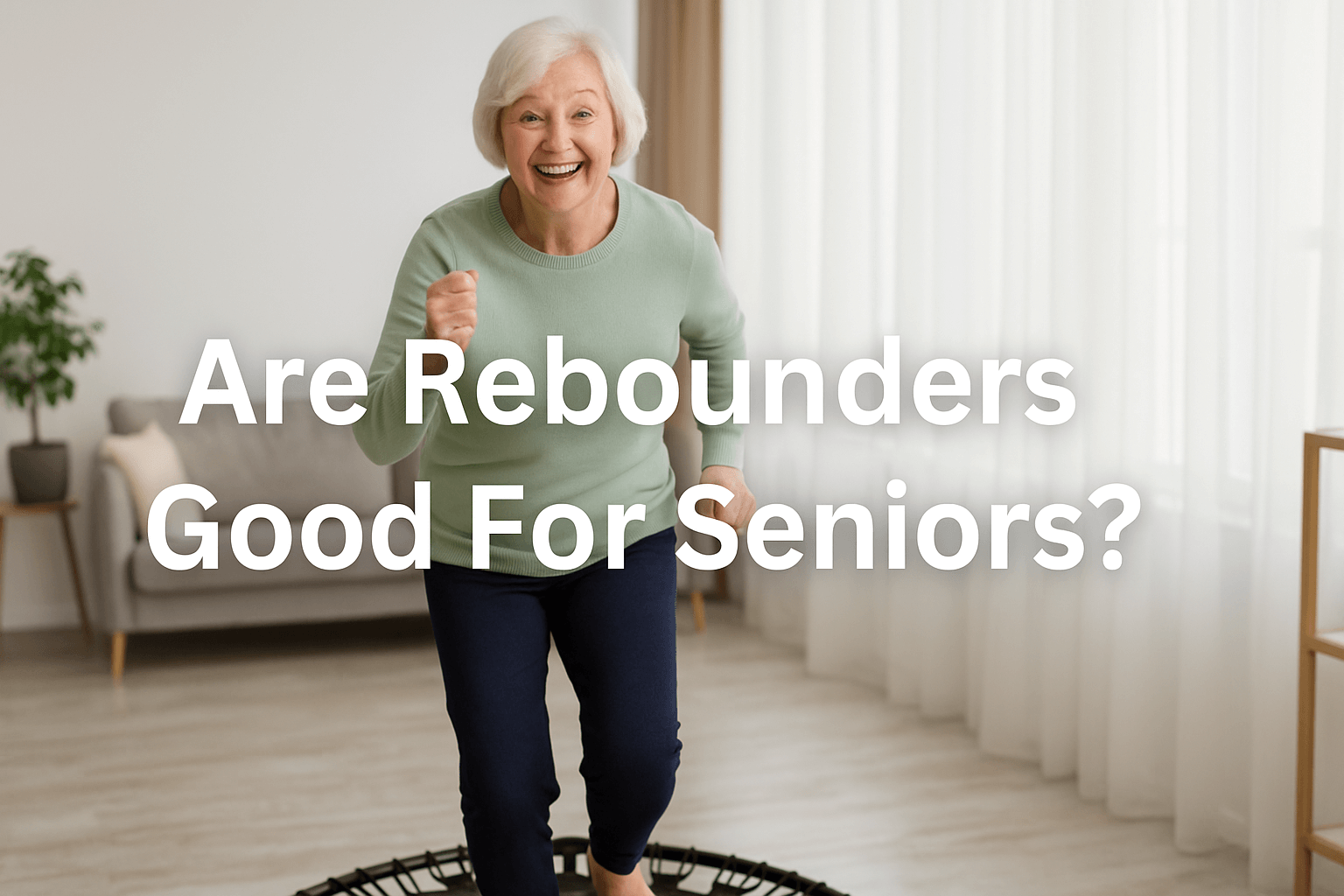
Are Rebounders Good For Seniors?
Think trampolines are just for kids? Think again! Rebounder trampoline benefits make them brilliant for seniors too—gentle on joints, great for balance, and even boost heart health. So, are rebounders good for seniors? Yes! Keep reading to see why this fun fitness secret is bouncing back.
The Benefits of Rebounding for Seniors
A Gentle, Low-Impact Exercise
Protects Joints and Eases Joint Pain
Running can feel harsh on the knees. Even walking on uneven paths can sometimes be uncomfortable. That’s where a rebounder shines.
The soft bounce absorbs impact, taking the pressure off joints. It means seniors can get moving without worrying about aching hips or knees the next day.
Enhances Balance and Coordination
One of the biggest concerns as we get older? Falls. A stumble in the kitchen or garden can cause serious setbacks.
Rebounding helps strengthen the muscles around the ankles and knees. It also sharpens proprioception—that sense of where your body is in space. Over time, this translates to better balance and fewer wobbles.
Improves Cardiovascular Health
Getting the heart rate up doesn’t need to mean pounding pavements. A gentle session on a rebounder boosts circulation, strengthens the heart, and builds stamina.
It’s exercise that feels playful, not punishing. Many seniors find it a more inviting way to stay active than long walks or gym visits.

Full-Body Health Rewards
Bones naturally weaken with age, which is why osteoporosis is common later in life.
While rebounding hasn’t been shown to increase bone density, it can support bone health indirectly by improving strength, balance, and coordination — all of which help reduce fall and fracture risk. For maintaining or improving bone density itself, experts recommend resistance training and appropriate weight-bearing impact exercises (like brisk walking, stair climbing, or light hopping).
Strengthens Core and Leg Muscles
Think of rebounding as a full-body tune-up. The bounce engages the core muscles, while the legs take on the job of keeping you steady.
Over time, this makes everyday tasks—like climbing stairs or getting out of a chair—feel easier and safer.
Promotes Mental Well-Being
Rebounding isn’t just about the body. The rhythmic bouncing can boost mood by releasing endorphins, and many people find it almost meditative.
It also helps circulation and supports lymphatic flow, which plays a role in fluid balance and immune health. Feeling stronger, steadier, and more energised often follows naturally.

How to Get Started Safely
Choosing the Right Rebounder
Handlebars and Other Safety Features
Not all rebounders are created equal. For seniors, safety is the top priority. Look for sturdy frames, padded edges, and handles for extra support.
Think of the handlebar like a walking stick—it’s there when you need a little reassurance, especially at the beginning.
Soft Bungees vs. Stiff Springs
You’ll come across two main types: spring rebounders and bungee rebounders. Springs feel firm and snappy. Bungees give a softer, smoother bounce that’s kinder on the joints.
Most seniors prefer the comfort of bungees, especially if dealing with arthritis or long-term aches.

Recommended Exercises for Seniors
The Gentle Health Bounce
Start small. The health bounce is simply a soft up-and-down movement, where your feet hardly leave the mat. It’s great for circulation and gets you used to the feeling of rebounding.
Seated Bounces and Marching in Place
Not ready to stand? No problem. Sitting on the rebounder and doing mini bounces can still wake up your muscles.
Another option is marching gently in place while holding onto the handlebar. Both are safe, beginner-friendly, and surprisingly effective.
Listening to Your Body and Pacing Yourself
The golden rule? Don’t rush. Consistency matters more than intensity.
If you feel tired, take a break. If something hurts, stop. Rebounding should feel light, fun, and energising—not a chore.
Final Thoughts
Rebounding isn’t about reliving childhood trampoline tricks — it’s about giving seniors a safe, fun, and effective way to stay active. While it’s not proven to build bone density, it can help with joint comfort, balance, fitness, and overall wellbeing.
Start slow, use the right equipment, and enjoy the bounce. For optimal bone and heart health, combine rebounding with resistance training, walking, or other evidence-based exercises recommended for older adults.
⚠️ Waiver: This article is for informational use only and is not medical advice. Always speak with a healthcare professional before starting any new exercise programme.
Have you checked out our other posts?
Are Rebounders Good For Weight Loss?
Are Rebounders Good For Knees?
Are Rebounders Good For Osteoporosis?
Are Rebounders Good For Bone Density?
Are Rebounders A Good Workout?



Leave a comment